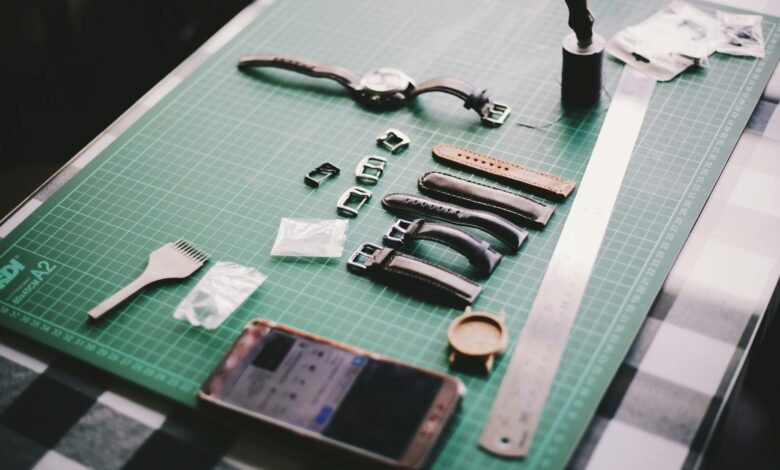DIY Soapodat Making Guide: Crafting Your Own Skincare Delight
DIY Soapodat Making Guide: Crafting Your Own Skincare Delight

Skincare enthusiasts and eco-conscious consumers have not just sparked a trend in homemade cosmetics; they’ve ignited a movement. The allure of customized, all-natural products, the satisfaction of crafting something with your hands, and the reduction of harmful chemicals are just a few reasons why individuals are increasingly making their own skincare items at home. Inviting you to take part in the DIY skincare revolution, this comprehensive guide walks you through creating your very own Soapodat – a delightful fusion of soap and exfoliating oatmeal. With careful attention to detail, you’ll learn the art of blending ingredients to produce a luxurious, skin-nourishing bar that’s tailored to your personal tastes and skin needs.
Ingredients and Tools Needed
Before you take the plunge into Soapodat making, it’s crucial to gather all the necessary ingredients and tools. Quality is key, especially when it comes to skincare. You want to use ingredients that are safe, non-toxic, and beneficial. Here’s what you’ll need:
Essential Ingredients
- Coconut Oil: For a rich lathering effect and moisturizing properties.
- Shea Butter or Cocoa Butter: To add creaminess to the soap and benefit skin texture.
- Lye (Sodium Hydroxide): The essential chemical to turn fats into soap.
- Distilled Water: For mixing with lye to initiate the saponification process.
- Oatmeal: A natural exfoliant and soothing agent.
- Essential Oils: For fragrance and potential therapeutic effects.
Tools and Equipment
- Heat-Resistant Bowls: For mixing lye and water, as well as your oils.
- Digital Scale: Accuracy is critical when measuring ingredients.
- Stick Blender: To speed up the saponification process.
- Silicone Spatula: For stirring and scraping the bowl clean.
- Soap Molds: To shape and set your Soapodat.
- Safety Gear: Lye is a caustic substance, so gloves and protective eyewear are a must.
Step-by-Step Guide
The Soapodat making process is a delicate interplay of chemistry and artistry. Each step plays a critical role in producing a high-quality bar of soap. Follow along to ensure your Soapodat is safe and effective for all skin types.
1. Preparation and Safety Measures
First things first, ensure your workspace is clean, dry, and well-ventilated. Lay out all your ingredients and tools, following the recipe diligently. Safety must not be compromised when handling lye:
- Always add lye to water, never the other way around.
- Work where pets and children cannot access the area.
- Should lye come into contact with skin, flush with water for several minutes.
2. Mixing Ingredients
Begin by melting coconut oil and shea/cocoa butter in a heat-resistant bowl. In a separate bowl, mix the lye with water (never the other way around). Once the oil and lye solutions reach the same temperature, combine them and mix thoroughly. This is where a stick blender can save you time and energy to achieve trace – the soap’s consistency when a drizzle is visible after the batter is stirred.
3. Molding and Shaping
When the Soapodat reaches trace, it’s time to add oatmeal for exfoliation and texture. Pour the batter into your prepared molds and smooth out the top. The Soapodat will need time to set, typically within 24 hours.
4. Curing Process
After unmolding, your Soapodat needs to cure for about 4-6 weeks. This allows excess moisture to evaporate, creating a harder, milder, and longer-lasting bar. Place the Soapodat on a tray with good airflow, flipping every few days.
5. Cutting and Packaging
Once cured, cut your Soapodat to your desired size and shape. Be sure to use a sharp knife for clean edges. Then, wrap them in airtight packaging, such as wax paper or plastic, to preserve their freshness.
Benefits of Soapodat
It’s rewarding to make your Soapodat, but what about its benefits? Homemade Soapodat offers several advantages, including:
- Skin Nourishment: The natural combination of oils, butters, and oatmeal provides gentle exfoliation and moisturization, leaving skin smooth and nourished.
- Tailored to You: You control the ingredients, allowing you to personalize scent and focus on skin concerns, such as acne, aging, or sensitivity.
- Eco-Friendly: You’ll reduce your carbon footprint by avoiding the plastic packaging and chemical waste associated with commercial soaps.
Tips and Troubleshooting
Here are a few things to keep in mind as you create your Soapodat:
Common Mistakes and How to Avoid Them
- Misjudging lye measurements can be dangerous. Always measure by weight, not volume.
- Mixing lye and oils that are too hot can cause a volcanic reaction. Monitor temperatures closely.
- Not waiting for the Soapodat to cure fully can result in lye-heavy soap, which is caustic to the skin. Patience is key.
Storage and Shelf-life
To ensure your Soapodat lasts, store it in a cool, dry place. Proper storage can extend the shelf life to over a year.
Conclusion
The art of Soapodat making is both practical and beautiful. It allows you to create a product that you can genuinely enjoy, knowing that it’s both beneficial to your skin and the environment. Take the leap, follow this guide, and start your Soapodat-making adventure. Remember, the more you practice, the better your Soapodat will become. Share your creations, learn from others, and revel in the delightful world of homemade skincare.
Ready to get started? Gather your ingredients and tools, set aside some time, and prepare to pamper yourself with a luxurious bar of skin-loving Soapodat. Your skin will thank you, and you might just find a new passion in the delightful craft of homemade skincare. If you have any questions or want to share your soaping experiences, leave a comment below – the DIY soap-making community is a welcoming place filled with knowledge and inspiration. Happy crafting!



